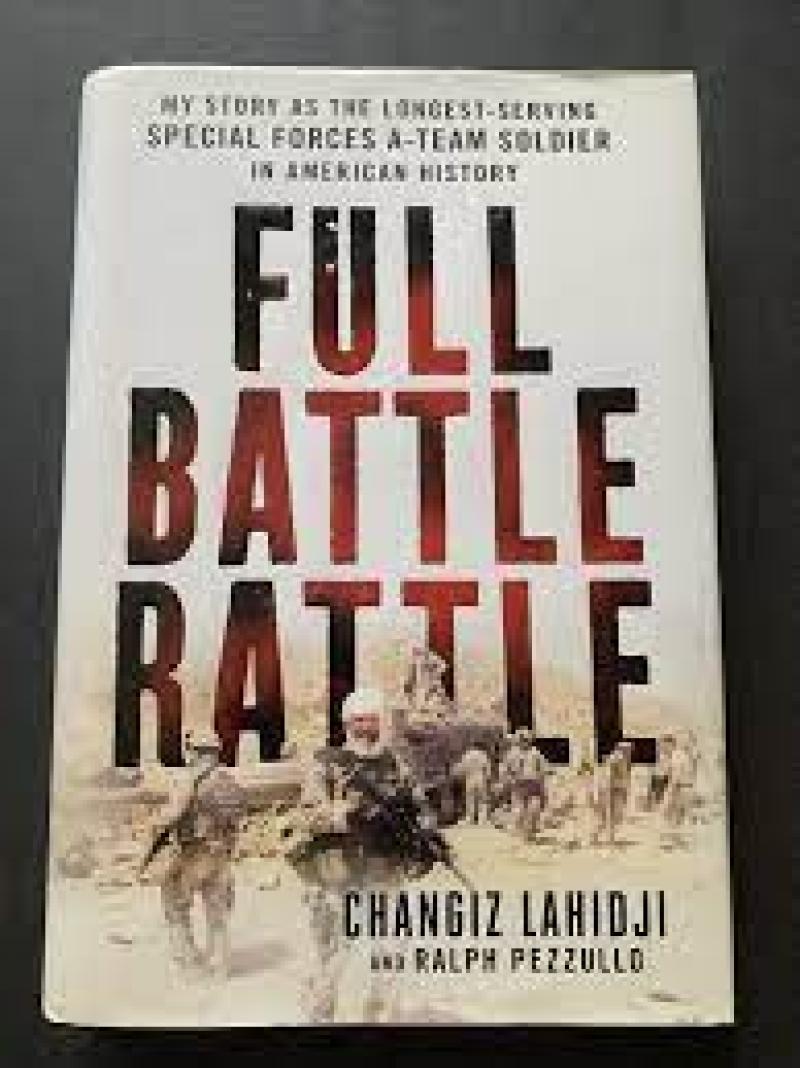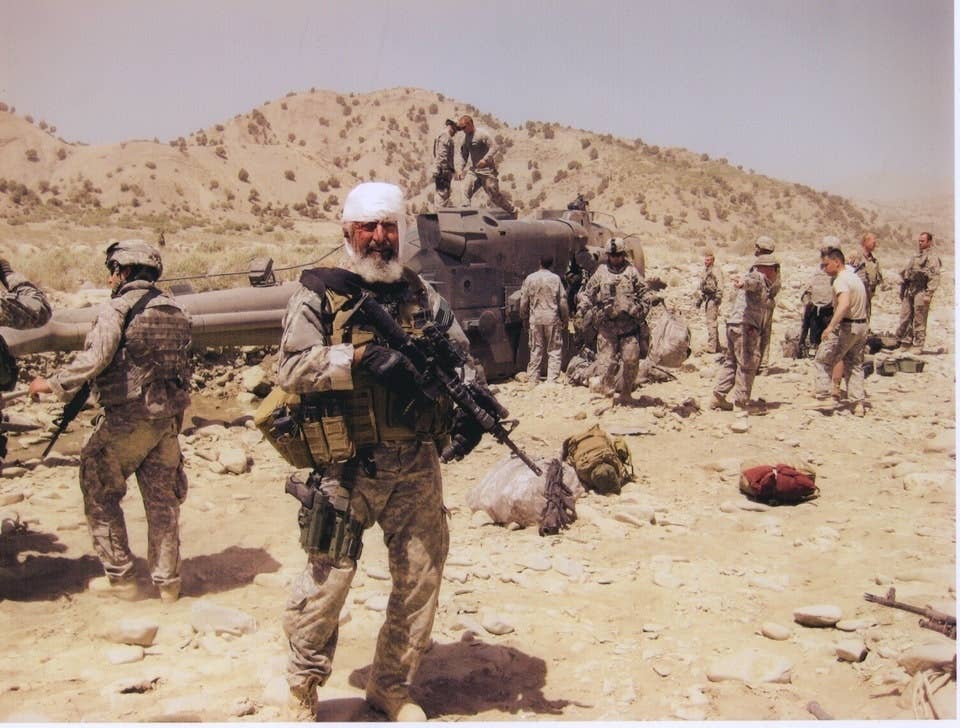The first Muslim Green Beret was also in Iran’s Special Forces

The first time Changiz Lahidji joined a Special Forces unit, his loyalty was to Reza Pahlavi, the Shah of Iran. But he found himself guarding lavish parties in the middle of the desert, protecting the opulent ruler of Imperial Iran and his guests. It wasn't exactly the life of adventure that John Wayne movies led him to believe he could have.
He didn't stay in service to the Shah for very long. It seemed like a waste. So, he moved to California, working in family-owned gas stations until November, 1978. That's when he joined the Army and became an instrument of destruction — for the United States.

The late 1970s were not a good time to be from the Middle East and living in the U.S., even if you're in the Army. He had to constantly endure racism from his fellow soldiers, even though they couldn't tell the difference between an Arab and a Persian. It didn't matter, Lahidji pressed on and finished Special Forces training. Less than a year later, he was wearing the coveted Green Beret and by December 1979, he was on his first mission.
He was on his way back to Ira

Changiz Lahidji standing guard during the Shah's celebration of the 2,500th anniversary of the Persian Empire. (Changiz Lahidji)
In November, 1979, students in Tehran seized the U.S. embassy there, taking 52 federal employees and U.S. troops hostage. Lahidji wasn't about to wait for the military to get around to assigning him to help. He wrote a letter to President Jimmy Carter, offering his unique skills, knowledge of Tehran, and native Farsi to the task. He wanted to choose his A-Team and get to Iran as soon as possible.
The U.S. military was happy to oblige. He wasn't going to lead an A-Team, but he had an Iranian passport and he went into Tehran ahead of Operation Eagle Claw in order to get advance knowledge of the situation on the ground and to rent a bus to drive hostages and operators out after they retook the embassy. After the disaster at Desert One, he was forced to smuggle himself out aboard a fishing boat.

Master Sgt. Changiz Lahidji, U.S. Army. (Changiz Lahidji)
After Iran, he didn't have to worry about being accepted by his fellow Green Berets. He was one of them by then.
He writes about all of his worldly adventures in some 33 countries in his memoir, Full Battle Rattle: My Story as the Longest-Serving Special Forces A-Team Soldier in American History. In it, you can read about him helping to bust drug rings in Spain, capture the mastermind behind the 1993 World Trade Center Bombing, and what it was like on the ground during the "Black Hawk Down" debacle in Mogadishu, Somalia. He was there for all of it.
But it wasn't the only time his Iranian background would come to the aid of U.S. forces. In 2003, some 24 years after the failure of Eagle Claw, Lahidji was in Tora Bora, dressed as a farmer and working for a U.S. private contractor. There, he would personally identify Osama bin Laden. When he went to the American embassy to report his findings, the U.S. seemed to take no action.
Lahidji does a lot of private contractor work these days. After spending so much time traveling and in service to the United States — he's done more than 100 missions in Afghanistan alone — he looks back on his time in the service as a privilege. Army Special Forces gave Changiz Lahidji the brotherhood and adventure he always dreamed of as a secular, middle-class child growing up in Iran.








M/Sgt Lahidji is the longest-serving Green Beret in history, 24 years as part of the ''A'' team.
He served in hundreds of missions across the world with 100 missions in Afghanistan alone.
I posted this article to show that you can never judge a person by a superficial glance or a pre conceived idea because of religion, political affiliation, race, creed or color.
He's a brave man. He's lucky he got out of Iran alive during the Hostage Crisis
You are correct on that, Trout.
He is both lucky and very smart. When Eagle Claw went South at Desert 1, he got out a Iran on a fishing boat. He was in Beirut when a car bomb hit our Embassy. Hezbollah shot him on a mission there. He was in Mogadishu when our two Black Hawks went down. He was dressed as a peasant while looking for Osama Bin Laden. .
A truly amazing soldier and a leader worthy of emulation.
Without a doubt, Drinker.
Correct!
Although if a person spends much of their day on social media they might not be aware of that fact.
So thanks for posting this!
Thanks, Krishna.
As if any adult human being didn't know that.
Says the person that has pre preconceived idea of all progressives/liberals/dems which you have expressed on a multitude of occasions on NT.
Actually I've met a considerable number of adult humans on the Internet who didn't know that.
I'm sorry to hear it.
Thank you for sharing.
Anytime.
Don't be afraid to ask.
lol
I'm not complaining-- just stating a fact. Years ago it used to annoy me-- now I"M used to it.
While there are exceptions ....
Here's another event-- a story (well maybe two stories in one) that many people may not not aware of:
1. Iraqi dictator Saddam Hussein was building a nuclear reactor.
2. At the time Iraq and Iran were bitter enemies, in fact they at war with each other. So Iran attempted to destroy Iraq's reactor while still under construction:
In an air attack codenamed Operation Scorch Sword , Iran attacked and damaged the site on 30 September 1980, with two F-4 Phantoms , shortly after the outbreak of the Iran–Iraq War . [52]
At the onset of the war, Yehoshua Saguy , director of the Israeli Military Intelligence Directorate , publicly urged the Iranians to bomb the reactor. [52] [53]
The attack was the first on a nuclear reactor and only the third on a nuclear facility in history. It was also the first instance of a preventive attack on a nuclear reactor which aimed to forestall the development of a nuclear weapon. [53] [54] [55]
_____________________________________________________
So this can be true of judging individuals-- but also of countries:
. . . you can never judge a person by a superficial glance or a pre conceived idea because of religion, political affiliation, race, creed or color.
Key word-- "attempted". They attempted to destroy it but failed. Here's why:
Due to last minute Iranian concerns that the reactor had been already fueled and could release radioactive fallout if hit, they did not attack the actual reactor dome, but the control room, research/centrifuge facilities, and the adjacent buildings.
The targets were struck and the buildings were damaged, along with the plant cooling mechanisms
Then it gets even more interesting. IIRC, Iran then secretly meet an Israeli official in Paris-- asking Israel to finish the job. And they did! (see: "Operation Opera")
(see: "Operation Opera")
Of course everyone, including the U.S. . condemned Israel's actions.
And again-- people are entitled to their opinions, but often an overall condemnation of any country often misses misses the point!
That is a very good point.
And there's more!
Israel has sometimes been in the position of "doing the jobs no one else is willing to do"...
This is much more recent than their destroying Saddam's reactor. It turns out that Syria was also building a reactor. IIRC it what pretty well disguised. But Israel discovered it pretty soon after construction started.
So they destroyed it. Yes-- Israel destroyed 2 nuclear reactors in the Middle East.
An interesting aspeect of this story-- several people were killed in the proximity to the reactor. And strangely-- they were all North Koreans. (Syria said that those killed were "tourists"-- North Korean tourists in Syria! (And I have a bridge i'd like to sell you... heh)
The raid took place on 6 September 2007, The Israeli and U.S. governments did not announce the secret raids for seven months.
Some interesting details HERE